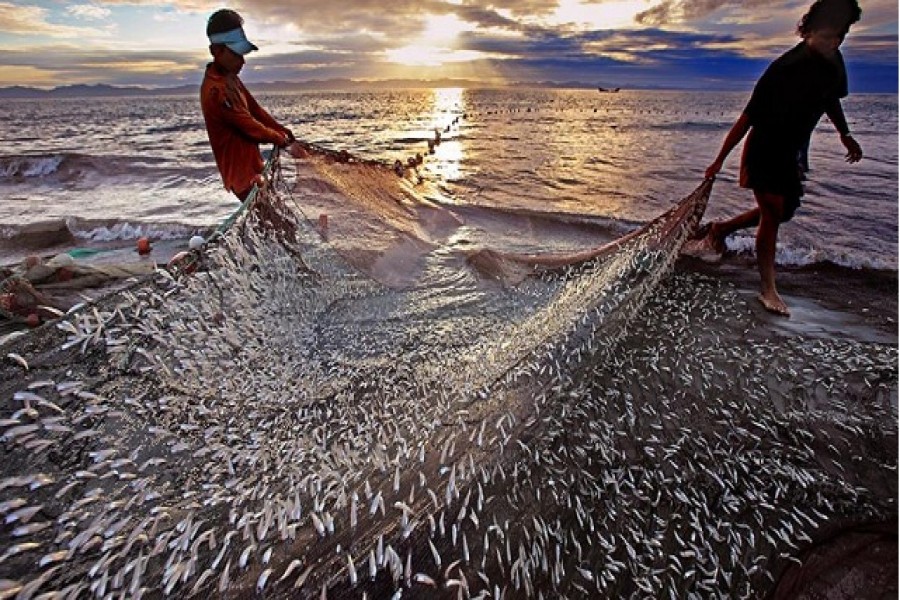Despite making firm strides, the fishery sector is still an underperforming sector, not only because it is performing below potential, but more so because the current production pattern has robbed us of the century-old taste and flavour of local varieties. Fishermen and fish traders have shifted from production and sale of local species and opted for high-yielding varieties that are devoid of traditional taste and flavour.
Bangladesh is one of the most appropriate regions for development of fisheries in the world and is gifted with the world's largest flooded wetland and the third largest aquatic biodiversity in Asia after China and India. It is also one of the biggest and most active deltas, fed by three mighty rivers -- the Padma, the Meghna and the Jamuna. All these features provide opportunities for fresh and brackish water fishery, in addition to the vast marine resources. In spite of all these factors in favour along with long coastline and large freshwater and marine water bodies, fisheries are underdeveloped compared to other industry sectors. Inland fishery production has escalated over the last few years, but the productivity per hectare water area is yet to attain its optimum level.
But since water bodies in the country have been declining, production of natural and traditional fish species has also gone down drastically.
Secondly, although total production of fish increased the increased, production cannot meet the nutritional requirement on the one hand and the cultured varieties of fish lack the taste and flavour of traditional local varieties on the other. This highlights the necessity of augmenting production of local varieties before everything else and to do so rivers and canals of the country will have to be brought back to their old shape. It is a cultural loss that should not be ignored.
Statistics shows that 54 species of sweet water fish are almost extinct, 28 species are under threat of extinction while there are 14 endangered species. A mid-term plan has to be in place to bring them back to life. As a result of pollution fishes are becoming scarce and hundreds of thousands of people have lost their livelihoods.
To see the fishery sector in shape, pollution of rivers and canals due to mindless disposal of domestic and industrial waste and excessive use of pesticides must be prevented and encroachment and resulting construction of structures on water bodies must be stopped. If done properly, all these will also help increase production of local species and restore their forgotten taste.
A popular complement to rice in our national diet, fish has lost its traditional taste. Given adequate government support, the fishery sector has the potential for ancillary industries in rural areas that often have a high rate of economic return. Employment opportunities for poor rural citizens would also stem their flow of migration to urban areas. The sector also opened employment opportunities for rural women. According to a survey conducted in 2015, more than 80 per cent of labourers engaged in fish processing industries were women.
Many industrial units known to be accountable for pollution of rivers and agricultural lands, do not have certificates from the Department of Environment (DOE) and are running without Effluent Treatment Plants (ETP). These units will have to be compelled to comply with rules regarding disposal of waste. The DOE has to take action against accused units. Restoration of lost rivers, increasing navigability of rivers, prevention of pollution, protection of bio-diversity and providing encouragement to fish farmers to cultivate local species etc.; are the demands of the time.


